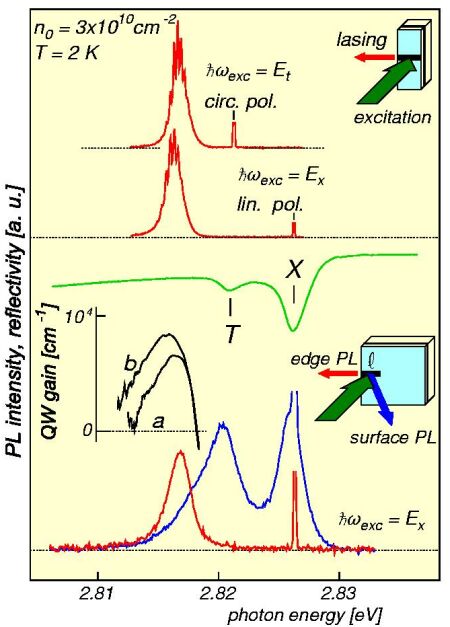
The optical transition takes place between
states of equal momentum in the electron and trion dispersion with the consequence
that no degeneracy is required for achieving optical gain. Equally
important is the fact that the trion band mass is by definition larger than
the electron mass. Therefore, the trion distribution ft spreads out deeper
in momentum space than that of the electron fe. As a result,
optical gain can be formed even if the total number of trions does not exceed
the number of electrons, i.e. without inversion in the total particle numbers.
The absorption-gain crossover
(ft(k) > fe(k),
vertical yellow lines) is related to the chemical potentials of electrons and trions by
- Ecr =
E t(0) - µe + µt
